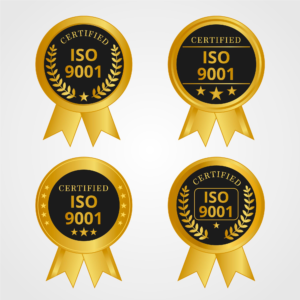
Recognize the real purpose of the ISO 9001 Audit and how it may impact your outcomes!
The most widely used standard in the management industry is ISO 9001.
As a result, there is a growing need for auditors who are familiar with this standard. Organizations, however, are always pleased with the findings of audits. In general, they are “too plastered” or “normative,” which prevents them from offering genuine feedback and aiding businesses in strengthening and modifying their management systems.
This is due, among other things, to the fact that many auditors did not fully grasp how to audit for ISO certification. Auditors typically concentrate on the “normal checklist” in these situations. However, competent auditors can examine the standard from the standpoint of the Quality Principles.
When you examine the guiding principles, you actually “enter the administration of the organization” and identify the issues that are truly pertinent to it.
Let’s examine the potential outcomes for each item.
The Customers: This is undoubtedly the most significant of all the principles ISO has upheld since its inception in 1985. A good auditor examines how these processes are arranged (if organized at all) to fulfill the demands and expectations of the company’s customers rather than the “company procedures” themselves.
The auditor wants to know if there are procedures to identify and satisfy the customer’s needs within the business.
What are these procedures and methods? The company is free to choose this; the auditor’s only duty is to determine whether the Management System is indeed client-focused.
Leadership: Leadership is another Quality Principle. Imagine a business where the top executives discourage fundamental procedures like handling non-compliances or risk management. He adheres to the standard by considering it their duty to advance Quality within the organization.
To achieve Quality and, by extension, compliance with all other standards and principles, the leaders of the audited processes must act. Thus the auditor must ascertain whether this is the case.
People engagement: In the world of Quality, engaging people is typically one of the hardest challenges. To engage people, deployments struggle greatly. Then, how can you check this principle?
We must determine whether the system as a whole contains tools that support user engagement. What are they, if any? What steps does leadership take to encourage participation? Do people realize how crucial it is to carry out their processes well?
Consider a system that has been in operation for three years.
Imagine for a moment that a colleague who “was not of the quality” never openly deviated from the norm. Does this system get users interested?
Process strategy: How well does the business comprehend its internal processes? Does the company understand what goes into the processes and what comes out as the activities and outputs? Here, we need to know if she genuinely gives the process approach top priority.
We must comprehend and analyze whether the interactions between the processes are obvious and effective. In other words, even if the business is unaware of an end-to-end approach and does not set up its procedures in this manner, we must determine if the process is effective from beginning to end.



